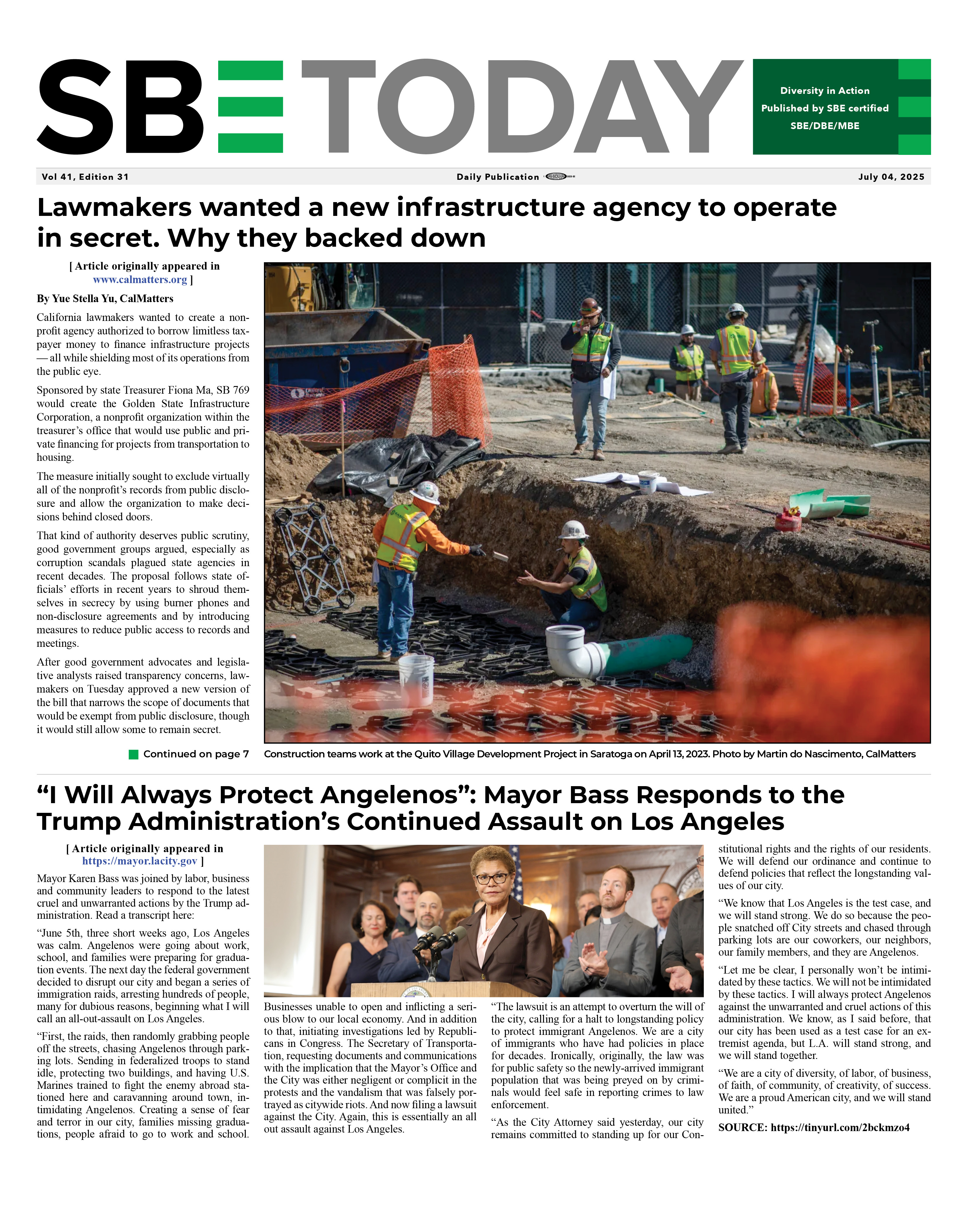Every Californian has been affected by the COVID-19 pandemic – some simply inconvenienced, while others suffer serious consequences. Between distance learning, telehealth and widespread use of telecommuting, internet connectivity is no longer optional.
Likewise, we must ensure strong policies while combating the crisis to best serve every California community. In this new stay-at-home digital world, a fast and reliable internet connection is vital for daily work, education and life – and reliable connections require faster deployment of above and below ground technologies, including wireless, fiber and everything in between.
Social distancing sounds like a simple concept; however, it quickly becomes more complex for those with limited internet access.
While many Californians are able to come together digitally, an equity and geographic divide exists. A crisis like the pandemic, where the best solution is to stay at home, quickly exposes how large the rift truly is. And contrary to popular belief, it exists in urban, suburban and rural communities and neighborhoods of all income levels.
According to the Federal Communications Commission, nearly 30 million Americans cannot reap the benefits of the digital age. The geographic barrier is particularly sharp: almost 80% of the millions of households without access to reliable high-speed internet are in rural areas. California data tells an even more solemn story.
While most of the state has seen an increase in broadband use and subscriptions at home, gaps still exist that must be bridged in rural, African American, Latino and low-income households. According to the Public Policy Institute of California, between 54% and 67% of the aforementioned households had broadband subscriptions in 2017, compared to 74% for all households. Affordability was the barrier to entry cited for 25% of low-income households without broadband.
Students also face a heavy burden, as their homes have become classrooms. Resourceful families who could not afford broadband in the past have utilized free, but now inaccessible libraries, schools and even Starbucks and McDonald’s.
Students must have access to reliable connections, as nearly all schools are closed for the rest of the school year. Most districts have set up distance learning through online platforms. The lack of online resources to guide students’ work and aid in research still leaves some without the learning opportunities of their peers. Similarly, equity issues exist from district to district, based on inadequate state funding and the limitations of devices when shelter in place began.
School districts have become very creative. Many have partnered with nonprofits that pay the monthly hotspot fees for low-income families. Some have turned to Wifi-enabled buses parked in the community. In others, like Mt. Diablo Unified, school parking lots with sufficient bandwidth allow students to download content or receive support from a teacher in their car where they can safely practice social distancing.
So how do we build this bridge as quickly as possible? State and national leaders must work together with the telecommunications industry to combat this hurdle for the good of their constituents. Focusing time and money on infrastructure, expediting permits and accessing resources to deploy that infrastructure are the only ways to create a lasting solution. And it needs to happen more sooner than later, as California schools begin to envision the possibility of more closures in the fall and a heavier reliance on connectivity.
As COVID-19 grips our state, internet connections provide the one and only lifeline to the outside world: friends, family, jobs, educators, doctors and more. Ensuring better access across all communities – particularly those in chronically under-served communities – is of paramount importance. We need a national approach, not an ad hoc strategy. Our students and communities can’t wait.
SOURCE: https://calmatters.org/commentary/my-turn/2020/05/broadband-access-more-important-now-than-ever-during-covid-19-pandemic/





